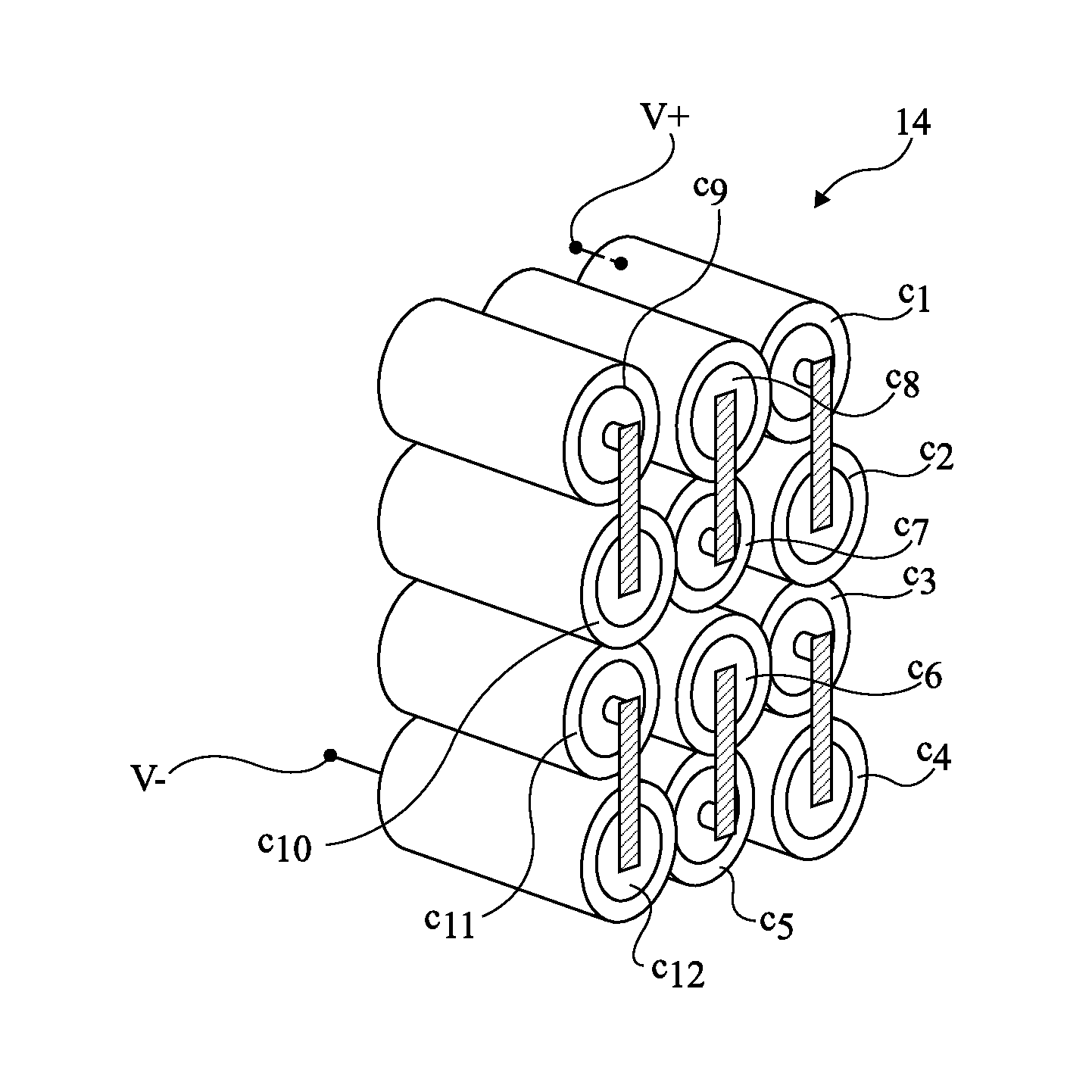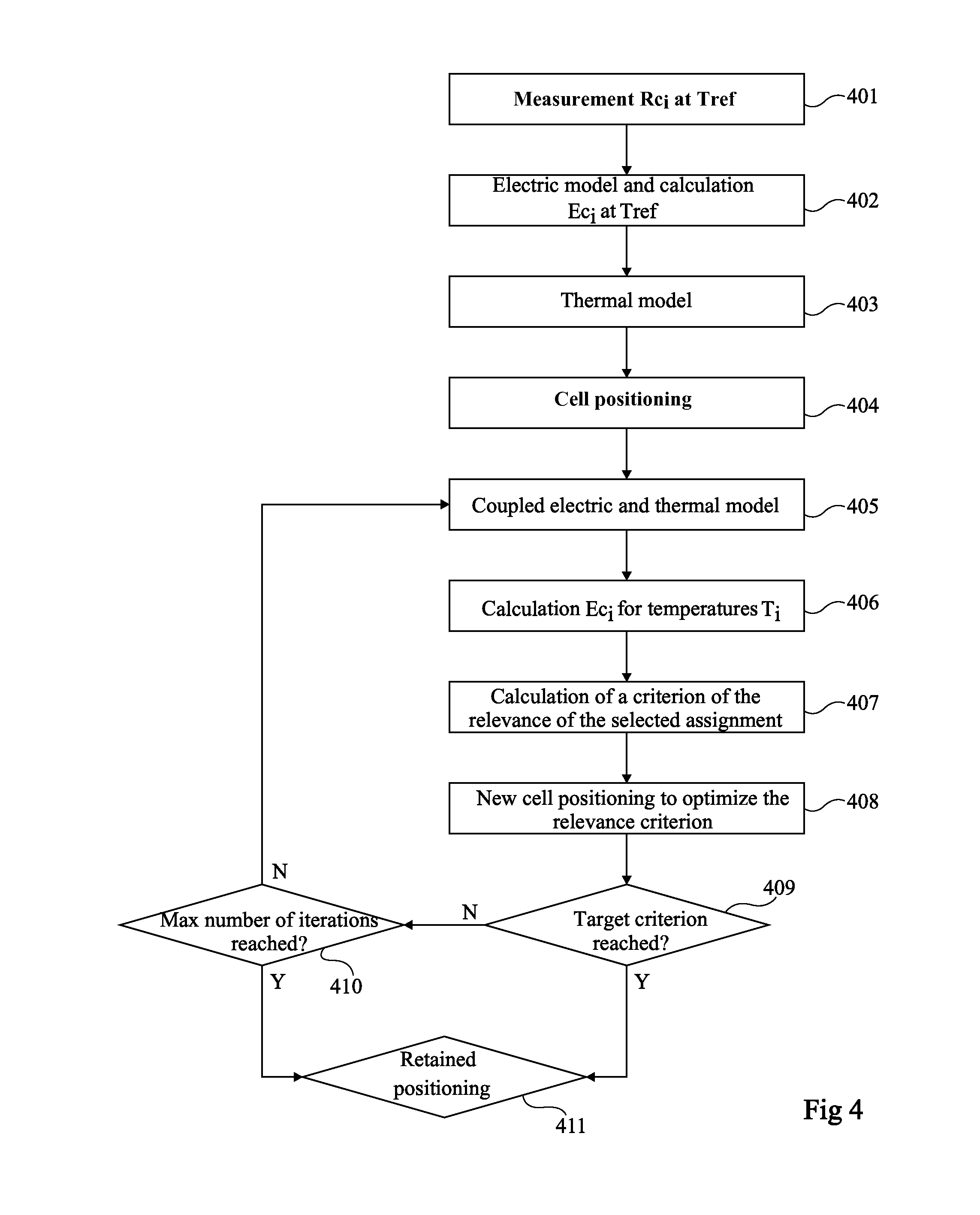Method of producing an electric battery
a technology of electric batteries and manufacturing methods, applied in the direction of secondary cell servicing/maintenance, sustainable manufacturing/processing, instruments, etc., can solve the problems of battery loss, reducing the life of the battery,
- Summary
- Abstract
- Description
- Claims
- Application Information
AI Technical Summary
Benefits of technology
Problems solved by technology
Method used
Image
Examples
Embodiment Construction
[0026]An electric battery is a group of a plurality of elementary cells (cells, accumulators, etc.) connected in series and / or in parallel between two nodes or terminals for providing a D.C. voltage.
[0027]FIG. 1 is a perspective view schematically showing an embodiment of a battery 14 comprising twelve elementary cells ci, i being an integer in the range from 1 to 12, series-connected between terminals V+ and V− for delivering a D.C. voltage. The battery cells are generally housed in a protection package (not shown) only leaving access to two lugs respectively connected to terminals V+ and V− of the battery.
[0028]The locations for receiving the cells in the battery and their respective positioning relative to one another are defined according to the constraints of the system using the battery, to the shape of the packaging, to the number of cells to be placed in the battery, etc.
[0029]In the absence of a specific cooling system, the locations of the cells within a battery generally ...
PUM
| Property | Measurement | Unit |
|---|---|---|
| temperature | aaaaa | aaaaa |
| internal resistance | aaaaa | aaaaa |
| heat removal ability | aaaaa | aaaaa |
Abstract
Description
Claims
Application Information
 Login to View More
Login to View More - R&D
- Intellectual Property
- Life Sciences
- Materials
- Tech Scout
- Unparalleled Data Quality
- Higher Quality Content
- 60% Fewer Hallucinations
Browse by: Latest US Patents, China's latest patents, Technical Efficacy Thesaurus, Application Domain, Technology Topic, Popular Technical Reports.
© 2025 PatSnap. All rights reserved.Legal|Privacy policy|Modern Slavery Act Transparency Statement|Sitemap|About US| Contact US: help@patsnap.com



